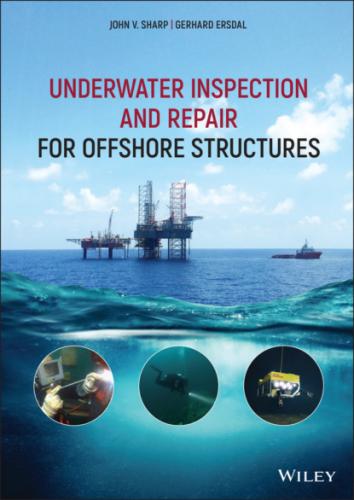1.3.3 Concrete Platforms
Concrete is used in several different types of offshore structures, which include:
gravity‐based structures, or GBS (for example, the Norwegian platforms Statfjord A‐C and UK platform Brent C);
tension leg platforms, or TLP (the Norwegian platform Heidrun);spar platforms, particularly for wind energy production,
semi‐submersible platforms (the Norwegian platform Troll B);
Jarlan walls enclosing concrete tanks (the UK platform Ninian and the Norwegian platform Ekofisk Tank);
steel‐concrete hybrid (the UK platform Ravenspurn); and
articulated tower (used as a loading column on Maureen).
The first concrete structure to be installed in the Norwegian sector was the Ekofisk tank in 1973 and the first to be installed on the UKCS was Beryl Alpha in 1975. At the time of writing, there are 22 concrete gravity‐based platforms, together with one concrete tension leg platform (Heidrun), one concrete semi‐submersible platform (Troll B) and one concrete base for a steel upper section (Harding).
Due to the dominance of GBS‐type structures, this book will mainly focus on these, but some aspects will apply for all types of concrete structures. The main parts of a concrete gravity‐based structure (GBS) are:
legs, towers and shafts;
storage cells (caissons);
steel‐to‐concrete transition;
shaft‐to‐base junction;
prestressing anchorages;
splash zone;
foundations; and
cathodic protection system.
Most concrete structures rest on the seabed on a large caisson often with skirts that penetrate the seabed protecting the structure against horizontal and overturning forces (Figure 4 c). The size of the caisson and skirts depends on local soil conditions. The topside steel structure is usually supported on up to four concrete columns/shafts extending from the caisson through the sea surface. The caisson can be divided into cells, which may be used as compartments for oil storage or as ballast. One or two of the columns are usually drill shafts supporting conductor frames and well‐conductors. Some of the shafts, which may be water filled or dry, are normally outfitted mechanically.
1.4 Overview of this Book
In this book the important issues discussed so far are addressed by the following topics as indicated in Figure 6:
regulatory requirements for inspection and repair (Chapter 2);
where and when a structural inspection is needed (Chapter 6);
what tools and methods can be used to inspect structures and how inspection tools are deployed (Chapter 4);
types of damage that are found on offshore structures (Chapter 3);
what tools and methods can be used to monitor structures (Chapter 5);
how is the information maintained about the design, fabrication and installation in addition to the history of operation and inspection results (Chapter 6.1.5);
when is an anomaly in a structure acceptable and when is mitigation or repair needed (Chapter 7); and
which repair schemes are appropriate and what is the strength and fatigue life of a repaired component (Chapter 8).
Figure 6 The management process for safe operation by inspection and mitigation.
In all these areas, the book aims to provide an overview of previous studies relevant to each topic along with what is considered good practice.
An earlier book by Ersdal, Sharp and Stacey (Ersdal et al. 2019) addressed the topic of ageing and life extension of offshore structures, which provides a useful addition to this book. The main types of changes identified in this previous book are:
physical changes (ageing, degradation, loading, etc.);
technological changes (including compatibility and obsolescence);
changes to knowledge and safety requirements; and
structural information changes (e.g., accumulation of inspection data, loss of design data).
The focus of this book is on physical changes. However, the additional changes will also influence the safety of a structural system.
As already mentioned, there has been a significant amount of previous work, including research on each of these key elements related to inspection, evaluation and repair for offshore structures, which are in some cases unavailable to the public. These key reports have been reviewed by the authors and presented in this book with the aim of providing the reader with an awareness of this background, which is important in the context of structural integrity management.
It is important to recognize that choices made in the design will significantly influence inspection and repair of an offshore structure (the need for inspection and how it can be performed). Such choices include:
the existence of any preinstalled monitoring systems;
access for inspection and repair;
cathodic protection system design and coatings;
material selection;
design margins, design fatigue life, robustness, redundancy; and
operational restrictions given by the design.
In addition, the book will discuss the competency requirements for inspectors, structural engineers involved in integrity management and the organisational requirement for integrity management.
1.5 Bibliographic Notes
Section 1.3 is partly based on Ersdal, Sharp and Stacey (2019).
References
1 Bhattacharya, S. (2019), Design of Foundations for Offshore Wind Turbines, Wiley, 2019.
2 Ersdal, G., Sharp, J.V. and Stacey, A. (2019), Ageing and Life Extension of Offshore Structures: The Challenge of Managing Structural Integrity, Wiley, 2019.
3 HSE (2006). “Plant Ageing—Management of Equipment Containing Hazardous Fluids or Pressure”, HSE RR 509.
4 SSC (1992) “Marine Structural Integrity Programs (MSIP)”, Ship Structure Committee report no 365, 1992.
5 SSC (2000). “SSC‐416 Risk‐Based Life Cycle Management of Ship Structures”, Ship Structure Committee report no 416, 2000.
6 Sundar, V. (2015), “Ocean Wave Mechanics: Application in Marine Structures”, John Wiley & Sons, Ltd.
Notes
